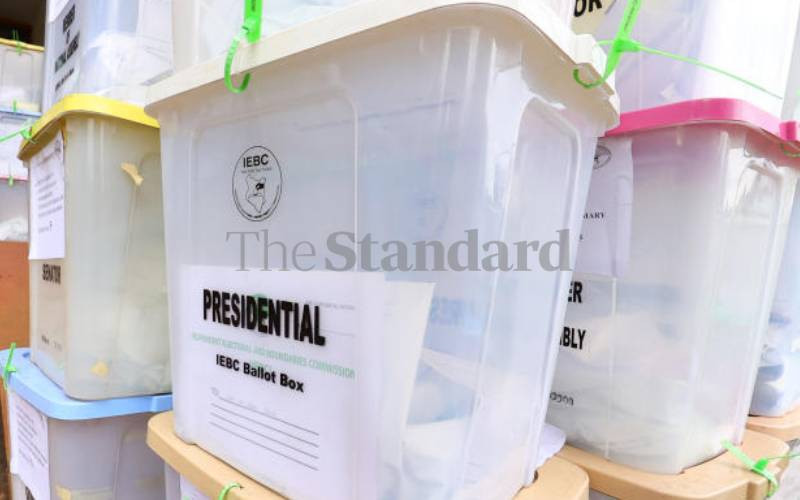
While experts say the country is not experiencing a housing bubble, they agree that strategic measures are required to correct the situation, writes KEVIN OGUOKO
If you are earning Sh100,000 or below, chances are that you cannot afford to buy a Sh900,000 house through a mortgage. The latest data from The Mortgage Company reveals that half of all urban Kenyans cannot afford loan repayments on a Sh700,000 house.
In its report for the first quarter of this year, the firm also shows that just one per cent of urban Kenyans can afford mortgage repayments on a Sh5.7 million house, and a further four per cent for a Sh3.9 million house.
A person earning Sh100,000 a month would have to spend close to 70 per cent — Sh69,230 — of their salary for 20 years to service a Sh5.6 million mortgage on a two-bedroom house in Mlolongo at the current best market rate of 13.9 per cent.
The same unit would cost Sh21,000 or less in monthly rent, thus making it convenient to rent, leading to what is commonly referred to as ‘rent-trap’.
An American would spend 40 per cent of their salary to service a similarly priced unit at their best market rate (current) of six per cent.
So the question now is: Are Kenyans gearing up for a real estate bubble? A property bubble occurs when property prices increase rapidly until they reach unsustainable levels, then they start plummeting.
This comes in the wake of reports that low-income houses and middle-income homes, normally costing below Sh4 million, are being snapped up by wealthy cash buyers who then rent them out.
This has been made worse by the high property prices, coupled with high interest rates, making mortgage to be out of reach for the majority of Kenyans.
“The market continues to be handicapped by the lack of access to mortgages for mid-level and lower-level buyers,” said Sakina Hassanali, Head of Marketing and Research at Hass Consult Limited, during the release of the Hass Property Index report for the first quarter of this year.
She added: “Nationwide, the demand for housing is strongest at the lowest end of the market, but the financing options are almost non-existent, rendering the private sector property market a high-end affair for so long as property remains cash purchase only.”
According to the Hass Consult report, property prices have increased by a staggering 3.44 times since 2000. The average price of a property has gone from Sh7.1 million in December 2000 to Sh24.6 million in March 2014.
The average value for a four to six-bedroom property is currently Sh34.5 million, while the average value for a one- to three-bedroom property is currently Sh11.5 million.
Investopedia describes a housing bubble as ‘an increase in demand in the face of limited supply, which takes a relatively long period of time to replenish and increase’. Kenya faces a shortage of 170,000 housing units per year against an annual demand of 200,000.
Stay informed. Subscribe to our newsletter
“It is a suppliers market; they (developers) are determining housing prices against a huge demand. As a result, developers are enjoying the highest margins ever,” says Patrick Wameyo, an investment lecturer at the Kenya School of Monetary Studies.
He adds: “What we are experiencing in Kenya is not a housing bubble but a dream where one is chasing a monkey at night. If we do not take strategic measures to provide affordable quality housing to a majority of the population, Vision 2030 dream of providing sufficient homes will not be achieved.”
The US housing market, which provides a wealth of information on description of a housing bubble, experienced tremendous growth in its real estate sector when the government of the day localised United Kingdom’s Margaret Thatcher policy of making houses affordable to all. Her belief was that capitalism was good not only for the rich, but for people on modest incomes.
Lowered rates
US banks lowered interest rates and almost every working man or woman could afford a home. Home ownership picked up steeply from the 1960s all the way to early 2000s. That is when trouble started.
“Because of the availability of loans, people took mortgages to develop second and third homes for rental or personal use. When the interest rates started rising, they couldn’t afford to service the loans, leading to foreclosures,” says Wameyo.
“As at 2007, the debt to GDP ratio in the US economy was 102.1 per cent, which means people were surviving fully on loans. Banks tried to sell the houses in the market, but couldn’t realise market rates because of the reduced demand. Rich cash buyers came snapped up the houses at reduced rates. That is what caused the housing bubble.
Back home, a number of factors hinder mortgage take-up, thus decreasing homeownership. One of them is low supply of appropriately priced homes.
According to the mortgage report, only salaried employees can access loans from banks as banks consider “pay-slips” locking out the 12 million Kenyans, according to data from the Africa Economics data, in informal employment.
“It is ironic that an owner of a small and medium enterprise cannot access a mortgage because they don’t have a pay-slip, while his employees, with pay-slips, have a smooth ride to the bank. The bank is willing to take a risk on the employee, but not the person ensuring that the employee gets paid,” noted the mortgage report.
“Banks consider people without a steady income as high risk and are therefore are reluctant to extend loans to them,” Caroline Kariuki, the Managing Director of The Mortgage Company, said during the release of the report.
Risk assessment
She added: “We need to learn how to assess the risk of the informal sector and the self-employed. Even those who boast rental income are considered “risky” for banks, with their income so heavily discounted as to be way too low to allow access to any decent loan. The current rental discount means that for every Sh100 in rental income, the financiers will only allow Sh45 to Sh55 for mortgage income considerations. This is despite the fact that to earn this level of rental income, the person already owns a highly valuable property.”
To make owning a house less of a dream, a number of suggestions are being explored, one of them being introduction of a secondary mortgage market.
“The banks have always argued high operation costs and the risks involved for the high interest rates. The Government is constituting an inter-ministerial forum where the discussion of reduction of the high interest rates by banks is the top agenda. It is our hope that our plea for the channelling of pension funds to provide long-term funds to the mortgage market to reduce the high interest rates will be one of the suggestions put forward,” said Kariuki.
But as Patrick Wameyo argues, this can only do so much as insurance companies and the National Social Security Fund (NSSF) is limited by the rule on the amount of money they could channel into the money market.
“The Government raised the minimum retirement age from 55 to 60. This was due to a liquidity problem whereby they couldn’t pay out pension benefits so they had to stretch it out,” said Wameyo.
The other suggestion is to encourage increasing the number of developers, especially foreign developers, who would go along way in increasing the supply and in turn reduce demand.
But as Abdullahi Dahir, Director of Imara Gardens Apartments argue, this is not necessarily a solution.
“Unless the Chinese are given special incentives, they will experience the same difficulties and harsh economic environment as we do. To deal with housing problems and make it less of a dream, we need a holistic approach from different angles,” says Dahir.
There is a need, he says, for a mind shift when it comes to cheaper building solutions. Kenyans, he says, are still reluctant to embrace cheaper building technologies.
“Kenyans still believe that if a house is not made of concrete, then it is not a solid house. These prefab solutions are what are being used in Western countries, taking into consideration their harsh weather conditions. If it is good enough for them, it should be good enough for us,” says Dahir.
 The Standard Group Plc is a
multi-media organization with investments in media platforms spanning newspaper
print operations, television, radio broadcasting, digital and online services. The
Standard Group is recognized as a leading multi-media house in Kenya with a key
influence in matters of national and international interest.
The Standard Group Plc is a
multi-media organization with investments in media platforms spanning newspaper
print operations, television, radio broadcasting, digital and online services. The
Standard Group is recognized as a leading multi-media house in Kenya with a key
influence in matters of national and international interest.
 The Standard Group Plc is a
multi-media organization with investments in media platforms spanning newspaper
print operations, television, radio broadcasting, digital and online services. The
Standard Group is recognized as a leading multi-media house in Kenya with a key
influence in matters of national and international interest.
The Standard Group Plc is a
multi-media organization with investments in media platforms spanning newspaper
print operations, television, radio broadcasting, digital and online services. The
Standard Group is recognized as a leading multi-media house in Kenya with a key
influence in matters of national and international interest.









